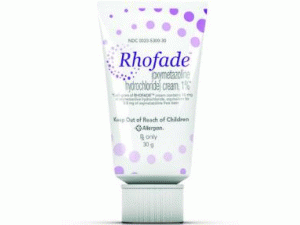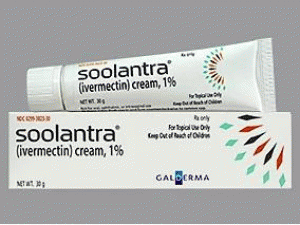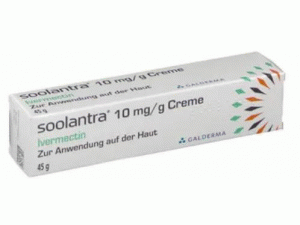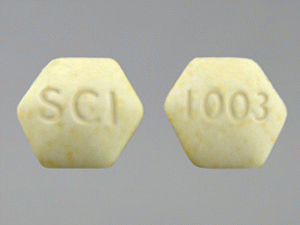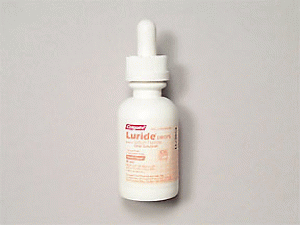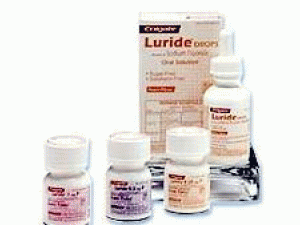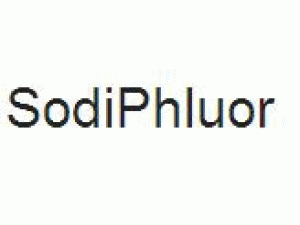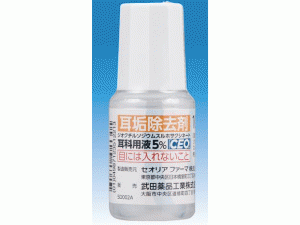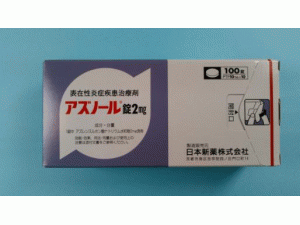咪康唑含片_ORAVIG_咪康唑含片miconazole中英对照说明书
[caption id="attachment_31136" align="alignleft" width="300"]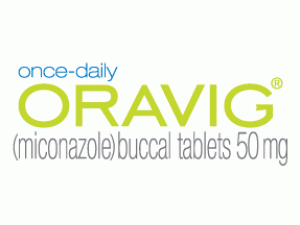 ORAVIG TAB 50MG(miconazole 咪康唑含片)[/caption]
药店国别:
产地国家:美国
处 方 药:是
所属类别:50毫克/片 14片/瓶
包装规格:50毫克/片 14片/瓶
计价单位:瓶
生产厂家中文参考译名:PRAELIA PHARMACEUTICALS
生产厂家英文名:PRAELIA PHARMACEUTICALS
原产地英文商品名:ORAVIG TABLET 50mg 14TABLET/BOTTLE
原产地英文药品名:MICONAZOLE
中文参考商品译名:ORAVIG含片 50毫克/片 14片/瓶
中文参考药品译名:咪康唑
简介:
美FDA批准咪康唑颊含片miconazole(商品名 Oravig)治疗口咽念珠菌病
近日,美国FDA批准Strative制药公司的咪康唑(micanazole)黏膜黏附性颊含片Oravig的新药,用于治疗≥16岁青少年至成人的口咽念珠菌病。
Oravig的剂量规格为50mg/片,以一日1次粘贴在牙龈上方式(不应粉碎、咀嚼或吞咽)使用,能在局部感染位置直接释放咪康唑,全身吸收微小且不会干扰吃、喝等日常活动。
批准日期:2010年4月 公司:Strative制药
ORAVIG(咪康唑 miconazole)口含片 供口服使用
最初的美国批准:1974年
作用机制:咪康唑是一种抗真菌药[见临床药理学]。
适应症和用法:ORAVIG是一种唑类抗真菌药,适用于成人口咽念珠菌病的局部治疗。
剂量和给药:
每天一次将一种ORAVIG 50mg口含片剂施用于牙龈区域,连续14天。
指导患者不要挤压,咀嚼或吞服片剂。
剂量形式和强度:
50毫克口含片。
禁忌症:
已知对咪康唑,乳蛋白浓缩物或产品的任何其他组分的超敏反应。
警告和注意事项:
过敏反应:接受咪康唑治疗的患者有过敏反应。在超敏反应的第一个迹象立即停止ORAVIG。
不良反应:
最常见的不良反应(≥2%)是:腹泻,头痛,恶心,味觉障碍,上腹痛和呕吐。
药物相互作用:
华法林:咪康唑可增强抗凝血作用。监测凝血酶原时间,INR,并注意出血。
用于特定人群:
怀孕:根据动物数据,可能会造成胎儿伤害。
哺乳母亲:给予哺乳期妇女时应谨慎行事。
儿科用途:16岁以下患者不具备安全性和有效性。
如何提供/存储和处理:
ORAVIG 50mg口含片作为含有50mg咪康唑的灰白色片剂提供。 ORAVIG片剂具有圆形侧面和扁平侧面。 ORAVIG片剂包装在14片(NDC 89141-250-14)的瓶子中。
ORAVIG应储存在20至25°C(68至77°F)[见USP控制的室温]; 在室温下允许15至30°C的偏移。 防止受潮,并远离儿童。
Miconazole Buccal Tablets (Oravig™)
Pharmacology Update
Miconazole Buccal Tablets (Oravig™)
By William T. Elliott, MD, FACP, and James Chan, PharmD, PhD. Dr. Elliott is Chair, Formulary Committee, Northern California Kaiser Permanente; and Assistant Professor of Medicine, University of California, San Francisco. Dr. Chan is Pharmacy Quality and Outcomes Manager, Kaiser Permanente, Oakland, CA. Drs. Elliott and Chan report no financial relationships to this field of study.
The FDA has approved a miconazole buccal tablet for the treatment of oropharyngeal candidiasis. This once-daily mucoadhesive buccal tablet provides slow release of the drug over the course of the day. The tablet is marketed by Strativa Pharmaceuticals as Oravig™.
Indications
Miconazole buccal tablets are indicated for the local treatment of oropharyngeal candidiasis in adults.1
Dosage
The buccal tablet should be placed to the gum region (with the round side facing the gum) once daily for 14 consecutive days.1 It should be applied in the morning after brushing the teeth and placed against the upper gum just above the incisor tooth and held in place for 30 seconds to ensure adhesion. The tablets should not be crushed, chewed, or swallowed. Chewing gum should be avoided, but food and drink can be taken normally. The application site should be alternated between the right and left sides of the mouth.
Miconazole buccal tablets are supplied as 50 mg tablets.
Potential Advantages
Miconazole buccal tablet is applied once daily compared to five times daily for clotrimazole troches.
Potential Disadvantages
Some Candida strains show reduced in vitro susceptibility to miconazole.1
Comments
Miconazole is an azole antifungal agent with in vitro activity against Candida albicans, Candida parapsilosis, and Candida tropicalis. The efficacy of the buccal tablets for the treatment of oropharyngeal candidiasis was shown in two studies, one in HIV-infected patients and in patients who were receiving radiotherapy for head and neck cancer.1,2 In both studies the infections were mainly caused by C. albicans (85% and 71%, respectively). In the first study, HIV patients with symptoms and microbiological documentation of oropharyngeal candidiasis were randomized to miconazole 50 mg daily for 14 days (n = 290) or clotrimazole troches 10 mg five times daily for 14 days (n = 287). Clinical cures (complete resolution of signs and symptoms) on days 17-22 were similar, 60.7% for miconazole and 65.2% for clotrimazole. The relapse rates (21-24 days after treatment completion) were also similar, 27.3% and 27.8%, respectively.
In the second study, adult patients who underwent radiation therapy for head and neck cancer with oropharyngeal candidiasis were randomized to miconazole buccal tablets (50 mg daily; n = 148) or miconazole oral gel (125 mg four times daily; n = 146) for 14 days. The complete response (complete disappearance of lesions) rates at day 14 were 50% for miconazole tablets compared to 43.8% for miconazole gel. The clinical relapse rates 14 days after the end of treatment were 18.9% and 12.5%, respectively. Patients with normal secretion responded better (100%) than those with reduced secretion (56.2%) or those with xerostomia (46.7%).2 The adhesion of the tablet to the gum was reported as very good, as 92.2% adhered for 6 hours and 61.1% for 12 hours.2 The tablets were generally well-tolerated with adverse events similar to the comparator; however, dysgeusia and ageusia were reported more frequently than the comparator (4.1% vs. 0% and 2.4% vs. 0.3%, respectively).
Clinical Implications
Oropharyngeal candidiasis is a common infection in immunosuppressed patients. The causative agent is generally Candida albicans. Oral fluconazole is considered the drug of choice,3 although topical therapy is often adequate for initial episodes. These include clotrimazole troches, nystatin suspension, or pastille or miconazole mucoadhesive tablets.
ORAVIG TAB 50MG(miconazole 咪康唑含片)[/caption]
药店国别:
产地国家:美国
处 方 药:是
所属类别:50毫克/片 14片/瓶
包装规格:50毫克/片 14片/瓶
计价单位:瓶
生产厂家中文参考译名:PRAELIA PHARMACEUTICALS
生产厂家英文名:PRAELIA PHARMACEUTICALS
原产地英文商品名:ORAVIG TABLET 50mg 14TABLET/BOTTLE
原产地英文药品名:MICONAZOLE
中文参考商品译名:ORAVIG含片 50毫克/片 14片/瓶
中文参考药品译名:咪康唑
简介:
美FDA批准咪康唑颊含片miconazole(商品名 Oravig)治疗口咽念珠菌病
近日,美国FDA批准Strative制药公司的咪康唑(micanazole)黏膜黏附性颊含片Oravig的新药,用于治疗≥16岁青少年至成人的口咽念珠菌病。
Oravig的剂量规格为50mg/片,以一日1次粘贴在牙龈上方式(不应粉碎、咀嚼或吞咽)使用,能在局部感染位置直接释放咪康唑,全身吸收微小且不会干扰吃、喝等日常活动。
批准日期:2010年4月 公司:Strative制药
ORAVIG(咪康唑 miconazole)口含片 供口服使用
最初的美国批准:1974年
作用机制:咪康唑是一种抗真菌药[见临床药理学]。
适应症和用法:ORAVIG是一种唑类抗真菌药,适用于成人口咽念珠菌病的局部治疗。
剂量和给药:
每天一次将一种ORAVIG 50mg口含片剂施用于牙龈区域,连续14天。
指导患者不要挤压,咀嚼或吞服片剂。
剂量形式和强度:
50毫克口含片。
禁忌症:
已知对咪康唑,乳蛋白浓缩物或产品的任何其他组分的超敏反应。
警告和注意事项:
过敏反应:接受咪康唑治疗的患者有过敏反应。在超敏反应的第一个迹象立即停止ORAVIG。
不良反应:
最常见的不良反应(≥2%)是:腹泻,头痛,恶心,味觉障碍,上腹痛和呕吐。
药物相互作用:
华法林:咪康唑可增强抗凝血作用。监测凝血酶原时间,INR,并注意出血。
用于特定人群:
怀孕:根据动物数据,可能会造成胎儿伤害。
哺乳母亲:给予哺乳期妇女时应谨慎行事。
儿科用途:16岁以下患者不具备安全性和有效性。
如何提供/存储和处理:
ORAVIG 50mg口含片作为含有50mg咪康唑的灰白色片剂提供。 ORAVIG片剂具有圆形侧面和扁平侧面。 ORAVIG片剂包装在14片(NDC 89141-250-14)的瓶子中。
ORAVIG应储存在20至25°C(68至77°F)[见USP控制的室温]; 在室温下允许15至30°C的偏移。 防止受潮,并远离儿童。
Miconazole Buccal Tablets (Oravig™)
Pharmacology Update
Miconazole Buccal Tablets (Oravig™)
By William T. Elliott, MD, FACP, and James Chan, PharmD, PhD. Dr. Elliott is Chair, Formulary Committee, Northern California Kaiser Permanente; and Assistant Professor of Medicine, University of California, San Francisco. Dr. Chan is Pharmacy Quality and Outcomes Manager, Kaiser Permanente, Oakland, CA. Drs. Elliott and Chan report no financial relationships to this field of study.
The FDA has approved a miconazole buccal tablet for the treatment of oropharyngeal candidiasis. This once-daily mucoadhesive buccal tablet provides slow release of the drug over the course of the day. The tablet is marketed by Strativa Pharmaceuticals as Oravig™.
Indications
Miconazole buccal tablets are indicated for the local treatment of oropharyngeal candidiasis in adults.1
Dosage
The buccal tablet should be placed to the gum region (with the round side facing the gum) once daily for 14 consecutive days.1 It should be applied in the morning after brushing the teeth and placed against the upper gum just above the incisor tooth and held in place for 30 seconds to ensure adhesion. The tablets should not be crushed, chewed, or swallowed. Chewing gum should be avoided, but food and drink can be taken normally. The application site should be alternated between the right and left sides of the mouth.
Miconazole buccal tablets are supplied as 50 mg tablets.
Potential Advantages
Miconazole buccal tablet is applied once daily compared to five times daily for clotrimazole troches.
Potential Disadvantages
Some Candida strains show reduced in vitro susceptibility to miconazole.1
Comments
Miconazole is an azole antifungal agent with in vitro activity against Candida albicans, Candida parapsilosis, and Candida tropicalis. The efficacy of the buccal tablets for the treatment of oropharyngeal candidiasis was shown in two studies, one in HIV-infected patients and in patients who were receiving radiotherapy for head and neck cancer.1,2 In both studies the infections were mainly caused by C. albicans (85% and 71%, respectively). In the first study, HIV patients with symptoms and microbiological documentation of oropharyngeal candidiasis were randomized to miconazole 50 mg daily for 14 days (n = 290) or clotrimazole troches 10 mg five times daily for 14 days (n = 287). Clinical cures (complete resolution of signs and symptoms) on days 17-22 were similar, 60.7% for miconazole and 65.2% for clotrimazole. The relapse rates (21-24 days after treatment completion) were also similar, 27.3% and 27.8%, respectively.
In the second study, adult patients who underwent radiation therapy for head and neck cancer with oropharyngeal candidiasis were randomized to miconazole buccal tablets (50 mg daily; n = 148) or miconazole oral gel (125 mg four times daily; n = 146) for 14 days. The complete response (complete disappearance of lesions) rates at day 14 were 50% for miconazole tablets compared to 43.8% for miconazole gel. The clinical relapse rates 14 days after the end of treatment were 18.9% and 12.5%, respectively. Patients with normal secretion responded better (100%) than those with reduced secretion (56.2%) or those with xerostomia (46.7%).2 The adhesion of the tablet to the gum was reported as very good, as 92.2% adhered for 6 hours and 61.1% for 12 hours.2 The tablets were generally well-tolerated with adverse events similar to the comparator; however, dysgeusia and ageusia were reported more frequently than the comparator (4.1% vs. 0% and 2.4% vs. 0.3%, respectively).
Clinical Implications
Oropharyngeal candidiasis is a common infection in immunosuppressed patients. The causative agent is generally Candida albicans. Oral fluconazole is considered the drug of choice,3 although topical therapy is often adequate for initial episodes. These include clotrimazole troches, nystatin suspension, or pastille or miconazole mucoadhesive tablets.
 ORAVIG TAB 50MG(miconazole 咪康唑含片)[/caption]
药店国别:
产地国家:美国
处 方 药:是
所属类别:50毫克/片 14片/瓶
包装规格:50毫克/片 14片/瓶
计价单位:瓶
生产厂家中文参考译名:PRAELIA PHARMACEUTICALS
生产厂家英文名:PRAELIA PHARMACEUTICALS
原产地英文商品名:ORAVIG TABLET 50mg 14TABLET/BOTTLE
原产地英文药品名:MICONAZOLE
中文参考商品译名:ORAVIG含片 50毫克/片 14片/瓶
中文参考药品译名:咪康唑
简介:
美FDA批准咪康唑颊含片miconazole(商品名 Oravig)治疗口咽念珠菌病
近日,美国FDA批准Strative制药公司的咪康唑(micanazole)黏膜黏附性颊含片Oravig的新药,用于治疗≥16岁青少年至成人的口咽念珠菌病。
Oravig的剂量规格为50mg/片,以一日1次粘贴在牙龈上方式(不应粉碎、咀嚼或吞咽)使用,能在局部感染位置直接释放咪康唑,全身吸收微小且不会干扰吃、喝等日常活动。
批准日期:2010年4月 公司:Strative制药
ORAVIG(咪康唑 miconazole)口含片 供口服使用
最初的美国批准:1974年
作用机制:咪康唑是一种抗真菌药[见临床药理学]。
适应症和用法:ORAVIG是一种唑类抗真菌药,适用于成人口咽念珠菌病的局部治疗。
剂量和给药:
每天一次将一种ORAVIG 50mg口含片剂施用于牙龈区域,连续14天。
指导患者不要挤压,咀嚼或吞服片剂。
剂量形式和强度:
50毫克口含片。
禁忌症:
已知对咪康唑,乳蛋白浓缩物或产品的任何其他组分的超敏反应。
警告和注意事项:
过敏反应:接受咪康唑治疗的患者有过敏反应。在超敏反应的第一个迹象立即停止ORAVIG。
不良反应:
最常见的不良反应(≥2%)是:腹泻,头痛,恶心,味觉障碍,上腹痛和呕吐。
药物相互作用:
华法林:咪康唑可增强抗凝血作用。监测凝血酶原时间,INR,并注意出血。
用于特定人群:
怀孕:根据动物数据,可能会造成胎儿伤害。
哺乳母亲:给予哺乳期妇女时应谨慎行事。
儿科用途:16岁以下患者不具备安全性和有效性。
如何提供/存储和处理:
ORAVIG 50mg口含片作为含有50mg咪康唑的灰白色片剂提供。 ORAVIG片剂具有圆形侧面和扁平侧面。 ORAVIG片剂包装在14片(NDC 89141-250-14)的瓶子中。
ORAVIG应储存在20至25°C(68至77°F)[见USP控制的室温]; 在室温下允许15至30°C的偏移。 防止受潮,并远离儿童。
Miconazole Buccal Tablets (Oravig™)
Pharmacology Update
Miconazole Buccal Tablets (Oravig™)
By William T. Elliott, MD, FACP, and James Chan, PharmD, PhD. Dr. Elliott is Chair, Formulary Committee, Northern California Kaiser Permanente; and Assistant Professor of Medicine, University of California, San Francisco. Dr. Chan is Pharmacy Quality and Outcomes Manager, Kaiser Permanente, Oakland, CA. Drs. Elliott and Chan report no financial relationships to this field of study.
The FDA has approved a miconazole buccal tablet for the treatment of oropharyngeal candidiasis. This once-daily mucoadhesive buccal tablet provides slow release of the drug over the course of the day. The tablet is marketed by Strativa Pharmaceuticals as Oravig™.
Indications
Miconazole buccal tablets are indicated for the local treatment of oropharyngeal candidiasis in adults.1
Dosage
The buccal tablet should be placed to the gum region (with the round side facing the gum) once daily for 14 consecutive days.1 It should be applied in the morning after brushing the teeth and placed against the upper gum just above the incisor tooth and held in place for 30 seconds to ensure adhesion. The tablets should not be crushed, chewed, or swallowed. Chewing gum should be avoided, but food and drink can be taken normally. The application site should be alternated between the right and left sides of the mouth.
Miconazole buccal tablets are supplied as 50 mg tablets.
Potential Advantages
Miconazole buccal tablet is applied once daily compared to five times daily for clotrimazole troches.
Potential Disadvantages
Some Candida strains show reduced in vitro susceptibility to miconazole.1
Comments
Miconazole is an azole antifungal agent with in vitro activity against Candida albicans, Candida parapsilosis, and Candida tropicalis. The efficacy of the buccal tablets for the treatment of oropharyngeal candidiasis was shown in two studies, one in HIV-infected patients and in patients who were receiving radiotherapy for head and neck cancer.1,2 In both studies the infections were mainly caused by C. albicans (85% and 71%, respectively). In the first study, HIV patients with symptoms and microbiological documentation of oropharyngeal candidiasis were randomized to miconazole 50 mg daily for 14 days (n = 290) or clotrimazole troches 10 mg five times daily for 14 days (n = 287). Clinical cures (complete resolution of signs and symptoms) on days 17-22 were similar, 60.7% for miconazole and 65.2% for clotrimazole. The relapse rates (21-24 days after treatment completion) were also similar, 27.3% and 27.8%, respectively.
In the second study, adult patients who underwent radiation therapy for head and neck cancer with oropharyngeal candidiasis were randomized to miconazole buccal tablets (50 mg daily; n = 148) or miconazole oral gel (125 mg four times daily; n = 146) for 14 days. The complete response (complete disappearance of lesions) rates at day 14 were 50% for miconazole tablets compared to 43.8% for miconazole gel. The clinical relapse rates 14 days after the end of treatment were 18.9% and 12.5%, respectively. Patients with normal secretion responded better (100%) than those with reduced secretion (56.2%) or those with xerostomia (46.7%).2 The adhesion of the tablet to the gum was reported as very good, as 92.2% adhered for 6 hours and 61.1% for 12 hours.2 The tablets were generally well-tolerated with adverse events similar to the comparator; however, dysgeusia and ageusia were reported more frequently than the comparator (4.1% vs. 0% and 2.4% vs. 0.3%, respectively).
Clinical Implications
Oropharyngeal candidiasis is a common infection in immunosuppressed patients. The causative agent is generally Candida albicans. Oral fluconazole is considered the drug of choice,3 although topical therapy is often adequate for initial episodes. These include clotrimazole troches, nystatin suspension, or pastille or miconazole mucoadhesive tablets.
ORAVIG TAB 50MG(miconazole 咪康唑含片)[/caption]
药店国别:
产地国家:美国
处 方 药:是
所属类别:50毫克/片 14片/瓶
包装规格:50毫克/片 14片/瓶
计价单位:瓶
生产厂家中文参考译名:PRAELIA PHARMACEUTICALS
生产厂家英文名:PRAELIA PHARMACEUTICALS
原产地英文商品名:ORAVIG TABLET 50mg 14TABLET/BOTTLE
原产地英文药品名:MICONAZOLE
中文参考商品译名:ORAVIG含片 50毫克/片 14片/瓶
中文参考药品译名:咪康唑
简介:
美FDA批准咪康唑颊含片miconazole(商品名 Oravig)治疗口咽念珠菌病
近日,美国FDA批准Strative制药公司的咪康唑(micanazole)黏膜黏附性颊含片Oravig的新药,用于治疗≥16岁青少年至成人的口咽念珠菌病。
Oravig的剂量规格为50mg/片,以一日1次粘贴在牙龈上方式(不应粉碎、咀嚼或吞咽)使用,能在局部感染位置直接释放咪康唑,全身吸收微小且不会干扰吃、喝等日常活动。
批准日期:2010年4月 公司:Strative制药
ORAVIG(咪康唑 miconazole)口含片 供口服使用
最初的美国批准:1974年
作用机制:咪康唑是一种抗真菌药[见临床药理学]。
适应症和用法:ORAVIG是一种唑类抗真菌药,适用于成人口咽念珠菌病的局部治疗。
剂量和给药:
每天一次将一种ORAVIG 50mg口含片剂施用于牙龈区域,连续14天。
指导患者不要挤压,咀嚼或吞服片剂。
剂量形式和强度:
50毫克口含片。
禁忌症:
已知对咪康唑,乳蛋白浓缩物或产品的任何其他组分的超敏反应。
警告和注意事项:
过敏反应:接受咪康唑治疗的患者有过敏反应。在超敏反应的第一个迹象立即停止ORAVIG。
不良反应:
最常见的不良反应(≥2%)是:腹泻,头痛,恶心,味觉障碍,上腹痛和呕吐。
药物相互作用:
华法林:咪康唑可增强抗凝血作用。监测凝血酶原时间,INR,并注意出血。
用于特定人群:
怀孕:根据动物数据,可能会造成胎儿伤害。
哺乳母亲:给予哺乳期妇女时应谨慎行事。
儿科用途:16岁以下患者不具备安全性和有效性。
如何提供/存储和处理:
ORAVIG 50mg口含片作为含有50mg咪康唑的灰白色片剂提供。 ORAVIG片剂具有圆形侧面和扁平侧面。 ORAVIG片剂包装在14片(NDC 89141-250-14)的瓶子中。
ORAVIG应储存在20至25°C(68至77°F)[见USP控制的室温]; 在室温下允许15至30°C的偏移。 防止受潮,并远离儿童。
Miconazole Buccal Tablets (Oravig™)
Pharmacology Update
Miconazole Buccal Tablets (Oravig™)
By William T. Elliott, MD, FACP, and James Chan, PharmD, PhD. Dr. Elliott is Chair, Formulary Committee, Northern California Kaiser Permanente; and Assistant Professor of Medicine, University of California, San Francisco. Dr. Chan is Pharmacy Quality and Outcomes Manager, Kaiser Permanente, Oakland, CA. Drs. Elliott and Chan report no financial relationships to this field of study.
The FDA has approved a miconazole buccal tablet for the treatment of oropharyngeal candidiasis. This once-daily mucoadhesive buccal tablet provides slow release of the drug over the course of the day. The tablet is marketed by Strativa Pharmaceuticals as Oravig™.
Indications
Miconazole buccal tablets are indicated for the local treatment of oropharyngeal candidiasis in adults.1
Dosage
The buccal tablet should be placed to the gum region (with the round side facing the gum) once daily for 14 consecutive days.1 It should be applied in the morning after brushing the teeth and placed against the upper gum just above the incisor tooth and held in place for 30 seconds to ensure adhesion. The tablets should not be crushed, chewed, or swallowed. Chewing gum should be avoided, but food and drink can be taken normally. The application site should be alternated between the right and left sides of the mouth.
Miconazole buccal tablets are supplied as 50 mg tablets.
Potential Advantages
Miconazole buccal tablet is applied once daily compared to five times daily for clotrimazole troches.
Potential Disadvantages
Some Candida strains show reduced in vitro susceptibility to miconazole.1
Comments
Miconazole is an azole antifungal agent with in vitro activity against Candida albicans, Candida parapsilosis, and Candida tropicalis. The efficacy of the buccal tablets for the treatment of oropharyngeal candidiasis was shown in two studies, one in HIV-infected patients and in patients who were receiving radiotherapy for head and neck cancer.1,2 In both studies the infections were mainly caused by C. albicans (85% and 71%, respectively). In the first study, HIV patients with symptoms and microbiological documentation of oropharyngeal candidiasis were randomized to miconazole 50 mg daily for 14 days (n = 290) or clotrimazole troches 10 mg five times daily for 14 days (n = 287). Clinical cures (complete resolution of signs and symptoms) on days 17-22 were similar, 60.7% for miconazole and 65.2% for clotrimazole. The relapse rates (21-24 days after treatment completion) were also similar, 27.3% and 27.8%, respectively.
In the second study, adult patients who underwent radiation therapy for head and neck cancer with oropharyngeal candidiasis were randomized to miconazole buccal tablets (50 mg daily; n = 148) or miconazole oral gel (125 mg four times daily; n = 146) for 14 days. The complete response (complete disappearance of lesions) rates at day 14 were 50% for miconazole tablets compared to 43.8% for miconazole gel. The clinical relapse rates 14 days after the end of treatment were 18.9% and 12.5%, respectively. Patients with normal secretion responded better (100%) than those with reduced secretion (56.2%) or those with xerostomia (46.7%).2 The adhesion of the tablet to the gum was reported as very good, as 92.2% adhered for 6 hours and 61.1% for 12 hours.2 The tablets were generally well-tolerated with adverse events similar to the comparator; however, dysgeusia and ageusia were reported more frequently than the comparator (4.1% vs. 0% and 2.4% vs. 0.3%, respectively).
Clinical Implications
Oropharyngeal candidiasis is a common infection in immunosuppressed patients. The causative agent is generally Candida albicans. Oral fluconazole is considered the drug of choice,3 although topical therapy is often adequate for initial episodes. These include clotrimazole troches, nystatin suspension, or pastille or miconazole mucoadhesive tablets.
用药温馨提示:当您服用此药物时,需定期接受医疗专业人士的检查,以便随时针对其药效、副作用等情况进行监测。本网站所包含的信息旨在为患者提供帮助,不能代替医学建议和治疗。
药品价格查询,专业药品查询网站,药品说明书查询,药品比价 » 咪康唑含片_ORAVIG_咪康唑含片miconazole中英对照说明书
药品价格查询,专业药品查询网站,药品说明书查询,药品比价 » 咪康唑含片_ORAVIG_咪康唑含片miconazole中英对照说明书

